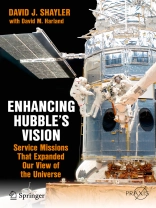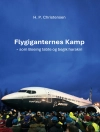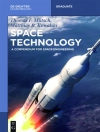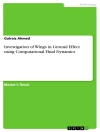This book tells the story of the four missions to maintain Hubble’s successful operation. Between 1997 and 2009 these repaired, serviced and upgraded the instruments on the telescope to maintain its state-of-the-art capabilities. It draws on first hand interviews with those closely involved in the project. The spacewalking skills and experiences gained from maintaining and upgrading Hubble had direct application to the construction of the International Space Station and help with its maintenance. These skills can be applied to future human and robotic satellite servicing and maintenance activities as well, not only in Earth orbit but at locations deeper in space.
A companion to this book, The Hubble Space Telescope: From Concept to Success, relates the events of the Telescope’s launch in 1990 and its rough start, after a 20-year struggle to place a large optical telescope in orbit. Originally intended to operate for fifteen years, Hubble has just passed its 25th anniversary, and there is every expectation that it will survive for thirty years. Despite its early problems, the Hubble Space Telescope has become a lasting legacy of the Space Shuttle program, and indeed is a national treasure.
Jadual kandungan
Preface.- Foreword by a Hubble servicing mission astronaut.- Glossary. – List of Illustrations.- List of tables.- Prologue.- Chapter 1: Servicing satellites – tools of the trade.- Chapter 2: Troubled times.- Chapter 3: Funding the plans and program.- Chapter 4: Simulating the servicing.- Chapter 5: STS-31 – The deployment mission.- Chapter 6: STS-61 – Service Mission 1 – back on track.- Chapter 7: Planning new science.- Chapter 8: STS-82 – Service Mission 2 – return to an old friend.- Chapter 9: STS-103 – Service Mission 3A – a mission split in two.- Chapter 10: STS-109 – Service Mission 3B – the other half.- Chapter 11: A fourth mission in doubt?.- Chapter 12: STS-125 – Service Mission 4 – a final farewell.- Chapter 13: The twilight years and beyond.- Chapter 14: NASA at its best.- Conclusion.- Appendices.- Appendix A: Hubble Service Mission data.- Appendix B: The ‘Hubblenauts’: servicing mission crew members.- Appendix C: Key personalities behind the scenes.- Appendix D: Aservicing chronology and timeline.- References.- Bibliography.- Index.
Mengenai Pengarang
Having followed spaceflight activities since 1968, David Shayler has a broad range of experience covering all aspects of human spaceflight history. In October 1982, he created Astro Info Service to focus on his space writing and research, with lectures and educational outreach activities. Early publications included the periodicals ‘Orbiter’ on the shuttle and ‘Zenit’ on Soviet activities, and a growing range of biographies on the world’s space explorers. In 1990 David co-created the Midland Spaceflight Society and acted as its chairman. His first book was published in 1987 and since then he has authored over 20 titles, including 13 titles in the Praxis Space Library between 2000 and 2009. He has contributed to titles on human spaceflight, including the three editions of “Who’s Who in Space” (Mac Millan, 1998). Personal research has been conducted at NASA JSC in Houston, and at KSC in Florida, as well as at Rice and Clear Lake Universities and NARA archives in Texas. His research continues daily and new titles are under various stages of production, some of which are available via the AIS website.
David Harland studied astronomy to degree level, and pursued a career lecturing in computer science, and academic and industrial research. In 1995, David ‘retired’ to resume his interest in space and started to write. He has over two dozen books published to date, a majority of them with Springer/Praxis and several others under contract. These days he considers himself to be an amateur hermit and a professional space historian.












